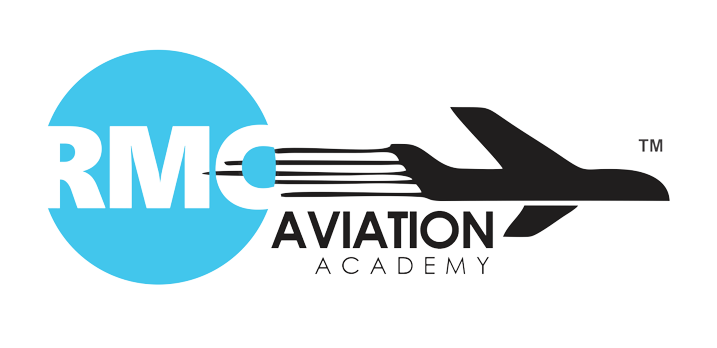Introduction
What is an airline transport pilot certificate?
The Airline Transport Pilot License (ATPL) is the highest level of certification available to aircraft pilots. The ATPL credential is often referred to as an Airline Transport Pilot (ATP) certificate (in the US). It enables a pilot to take charge of an airplane carrying a specific number of passengers. A pilot must obtain an Airline Transport Pilot License to work as a Captain for an airline. ATPL training comprises ATPL Theory classes, which are akin to ground school, and the completion of this course results in an ATPL Theory License or a Frozen ATPL (FATPL). Following that, a pilot must have at least 1500 flying hours to be eligible to take the ATPL test (practical test).Airline transport pilot license (ATPL) course qualification
- The applicant should have Indian Commercial Pilot Licence (CPL) with multi-engine
- endorsement or a minimum of 500 hours of flying experience of which at least 200
- hours should be as Pilot-in-Command in the case of Defence Personnel.
Airline transport pilot license (ATPL) course duration
Your Integrated ATPL course will last around 70 weeks, during which time you will complete ground school and flight school instruction to improve your theoretical knowledge and actual flying skills. Note: If you combine our Integrated ATPL course with a University degree, it will take you about 3 years to complete.Airline Transport Pilot License (ATPL) Course Eligibility
A valid Commercial Pilot License (CPL) with multi-engine endorsement or a minimum of 1500 hours of flying experience, including at least 500 hours as Pilot-in-Command, is required for ATPL. The minimum age for obtaining an Airline Transport Pilot License is 21 years old (ATPL). Commercial pilots must have a valid medical certificate to legally fly an airplane. This medical certificate can only be obtained after a medical exam is done by DGCA-approved doctors. A successful Class-1 Medical Assessment is required to get an Airline Transport Pilot License (ATPL).Skills Required
- The applicant for an Airline Transport Pilot License should have a minimum of 1500 total hours of flight time, out of which at least 500 hours should be logged as least Pilot-in-Command.
- Pilots must improve their communication, problem-solving, and observation abilities, as well as their depth perception and response time, as well as their ability to handle aircraft computer and navigation systems.
- Dgca atpl requirements should also be adhered to. Pilots must also have exceptional tenacity, mental fortitude, courage, and determination. They must be dependable, calm, and level-headed, with the ability to maintain clear communication with both the onboard personnel and air traffic control.
- Pilots must improve their practical and coordination skills, as well as their written English for report writing.
- Other abilities include the ability to take command in an emergency, the ability to inspire confidence, technical competence, and comprehension.
Fees in India 2023
Airline transport pilot license cost differs from institute to institute, given below is a basic fee structure:
- Registration – ₹ 15,000 (Rupees fifteen thousand)
- 225 Hrs of Flight Training towards CPL and AFI rating – ₹ 47,50,000 (Rupees forty-seven lac fifty thousand )
- 500 Hrs of Ground Classes – ₹ 1,80,000 (Rupees one lac eighty thousand)
- Accommodation & Transportation – ₹ 10,500 to ₹ 15,000 (Depending on the type of accommodation. Refer to HATS Accommodation for more information)
- Scholarships up to ₹ 3,50,000 (Rupees three lac fifty thousand)
The cost of ATPL in India as well as the fee structure is subject to change if the student exceeds the training hours or the flying training duration exceeds 18 months from the date of commencement of training.
Airline Transport Pilot License (ATPL) Course Syllabus
The subjects that are covered in the syllabus for the issuance of an Airline Transport Pilot License (ATPL) as per the DGCA requirements are as follows;
- Aviation Meteorology
Aviation Meteorological Services is one of the oldest services offered by the India Meteorological Department (IMD), and it plays a vital role in ensuring safe and efficient flight operations to and from national and international sectors via civil airports in India.
- Air Regulation and Navigation
Air navigation is flight navigation. Pilots in aircraft use it to determine their exact location and navigation. That is significant because if they become disoriented, they may crash into a mountain, fly into a dangerous location, or fail to find a safe landing spot.
- Basic Flight Instruments
All airplanes have six basic instruments: airspeed indicator, attitude indicator, altimeter, turn coordinator, heading indicator, and vertical speed indicator.
- Flight Training Process
A training flight is flown solely for training or testing a person or persons (e.g., a flight crew) to obtain, upgrade, or renew a license, including pilot competence checks. A flight operation of an aircraft at an airport for training purposes is limited to the flight activity of that aircraft between taxiing on and taxiing off the aircraft maneuvering area.
- Flight Physiology
Aviation physiology is concerned with the physical and psychological impacts of flight on aircrew members and passengers.
- Forces Acting On The Airplane
Thrust, drag, lift, and weight is the four forces operating on an airplane in straight-and-level, unaccelerated flight.
- VOR Navigation
The Very High-Frequency Omni-Directional Range (VOR) is a study about the ground-based electronic system that provides azimuth information for high and low-altitude altitude flights as well as airport approaches.
Some other topics also include:
- Manoeuvring
- Solo Flight and Dual Flights
- Aeromedical Factors
- Eight-on Pylons
- Power-off stalls
- Airframe
- Stability and Control
- Go-around Factors
- Normal & Cross Wind take-off
- Approach and Landing
Career & Job Prospects
You can fly in various aviation sectors with an Airline Transport Pilot License. Each job has its own set of prerequisites and credentials. With your ATPL, however, you have an edge because you are already a certified and professional pilot. Make sure to do your homework before diving into your new career. Once you are more familiar with the qualifications, you will be able to better prepare yourself, determine what extra courses and training you will require, and identify which abilities you may need to enhance.
Pilot Job Opportunities
Commercial pilots can find work in a variety of settings, including government and commercial domestic and international airlines, cargo planes, charter planes, and private planes. They can work for public sector airlines, private domestic airlines, and international airlines.
Even large corporations with that planes require the services of pilots. With the government seeking to expand the air services network, the need for this occupation is expected to increase rapidly. Even corporations are now entering this industry, further elevating this vocation as an exciting employment opportunity. Jobs for commercial pilots in nations other than India, including the United States, the United Kingdom, Australia, and certain European countries, have increased as a result of globalization Commercial pilots are paid well and receive numerous benefits.
The ATPL training cost yields to its fullest. According to reports, a commercial pilot’s initial monthly income might range up to Rs. 150,000 per month, depending on the airline and the individual’s expertise. Special benefits such as a contributory provident fund, a gratuity, and medical facilities are included in the compensation package. In addition to housing, medical and out-of-town allowances, and free or discounted air passes for direct family members and dependants, they are entitled to a variety of benefits and allowances. The pay scales of commercial pilots in government or organizations are determined by the grade level of the positions. In private international carriers, pay packets are even larger.
FAQ
A pilot with an Airline Transport Pilot License (ATPL) can fly private and commercial aircraft with unutilized passenger or cargo freight transport services by airlines. Furthermore, a pilot can fly other air carrier aircraft as long as they have the class or type rating of the aircraft they are flying.
Popular passenger aircraft include the Airbus A320, Airbus A350, Airbus A380, Boeing 737, Boeing 747, and Boeing 777, while cargo or freight aircraft include the Boeing 757, Airbus A300, and occasionally those used in passenger aircraft.
Here are some examples of Airline Pilot jobs:
- Mainline Carrier – Passengers are transported to destinations all over the world.
- Regional Airline – A smaller airline that operates “regionally” under one or more mainline brands. Transports passengers domestically with some select international destinations.
- Cargo carrier – For companies like FedEx, transporting cargo around the world is a part of their job.
- Military Pilot – Fly military aircraft to execute military missions and disaster response.
- Flight instructor – Build flight hours and teach the next generation of Aspiring Pilots
- Corporate aviation – For a company or business, it is necessary to transport passengers and/or cargo.
- Charter operation – Fly to a variety of destinations on a for-hire basis. No fixed schedule.
- Ferry operation – Fly an aircraft for the sole purpose of delivering it to an individual or business.
- Government service – Fly for government departments like the governor’s office.
- Law enforcement – Fly border patrol missions, capture speeders for state troopers, or even locate forest growth facilities.
- Firefighting – Find a secure route for a fire bomber or fly one yourself.
- Emergency medical service – Fly patients, and deliver life-saving treatment, and organs all over the world.
- Cropduster operation – Farmland will be sprayed with chemicals/fertilizers.
- Media – Fly for news agencies or traffic monitoring organizations.
- Tour guide – Passengers can get an amazing view of national wonders as they fly over landmarks and points of interest.
- Test pilots – These pilots usually come from a military or technical background, and they use their skills to ensure that new aircraft are safe to fly.
A pilot holding an Airline Transport Pilot License (ATPL) can be an instructor, although there are many restrictions. An airline transport pilot has the authority to instruct other pilots from the same airline, training program, air transportation service, or aircraft. However, if an airline pilot intends to instruct other student pilots, he or she must first obtain a Flight Instructor Certification to meet the standards of an instructor pilot to teach and train others. In addition, the flying training course must be credited to be eligible for future endorsement.

